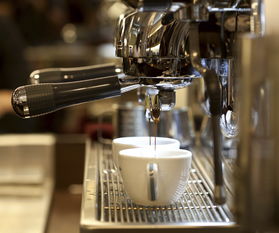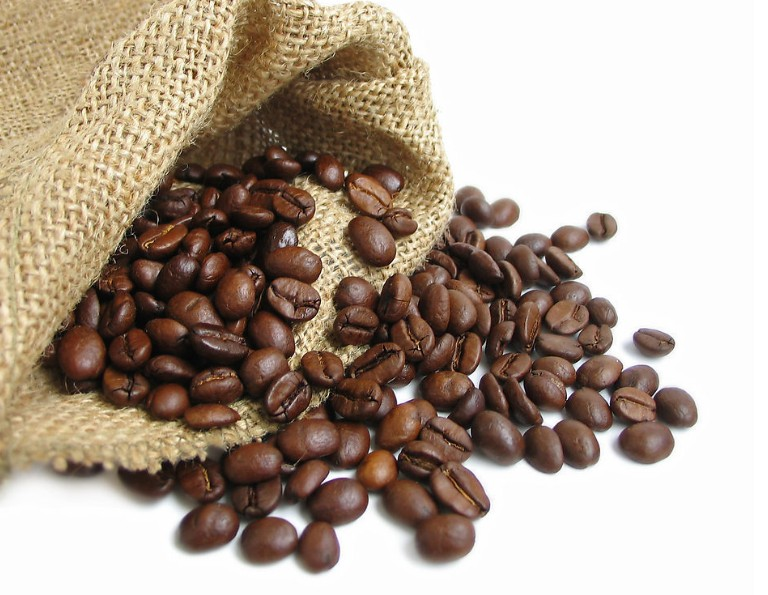Several factors that determine the quality of Espress
The production of Espresso is an art that requires precision and patience. Maybe it's because there are so many factors that affect the production of Espresso that we can have a lot of fun when we use our brains and emotional hearts to control its complexity. The following 12 factors and problems will directly affect the perfection of Espresso!
First, the factors that directly affect Espresso12
1. Match.
It is impossible to make a good Espresso without a good coffee mix. Coffee must be matched with the sweetness, aroma and lubrication required by Espresso. Coffee beans must be fresh. We recommend using coffee beans within 4 days after baking.
two。 Bake.
Deeply baked beans will taste bitter and scorched. Experienced bakers will use shallow baking to keep Espresso sweet.
3. Grind beans.
You must monitor the whole grinding process, and the thickness of the powder can keep the extraction process between 25 and 30 seconds.
4. Bean grinder.
A high quality bean grinder must be used. Cone-shaped grinding plates are more average and have a longer life than flat ones, and coffee is not heated during grinding. If the grinding plate is heated, the coffee will lose its flavor. Professionals believe that the combination of conical and parallel grinding disc is the best design.
5. Assign.
In the filter handle, before pressing the powder, the coffee powder must be evenly distributed in the filter of the handle.
6. Pressing powder.
First use 5 pounds of pressure powder once, then press once with 30 pounds of pressure, and then rotate 720 °with 20 pounds of pressure to make the powder surface smooth and smooth.
7. The water is warm.
The water temperature must be stabilized at 92-96 °C. When choosing Espresso machine, we must pay attention to the stability of water temperature and water temperature.
8. Water pressure.
The water pressure passing through the Espresso should be between 9 and 10 atmospheric pressure. This pressure is guaranteed to produce foam.
9. Take time.
The absorption time for making two 1-ounce cups of Espresso should be between 25 and 30 seconds. In addition to time, if the color of the Espresso starts to fade, you should end the production process. The goal should be to produce a dark red Espresso within 25-30 seconds without changing color.
10. Machine cleaning.
This is the biggest problem of doing Espresso today. If the machine, filter and filter handle are not cleaned frequently, the Espresso will smell of rotten oil.
11.Espresso Cup.
Espresso cups are preheated with a different heat source from the coffee maker. If the hot water of the machine is used to preheat the cup, the temperature of the boiler of the machine will be lowered, so that the Espresso produced is uneven. Espresso cups apply thick walls and narrow mouths to maintain heat and aroma.
twelve。 Practice.
Operational exercises and practices are very important. The key to Espresso is that you are always familiar with Espresso.

Second: the choice of coffee maker
1. Boiler capacity: if the boiler capacity is large, the effluent temperature is stable and the coffee quality is stable.
two。 Coffee machine temperature: whether it remains stable or not also affects the quality of coffee.
3. Atmospheric pressure: it is ideal to make coffee with nine air pressure values.
4. Effluent temperature: the international standard coffee machine effluent temperature is 90 °C, which should also be adjusted according to the roasting degree of coffee beans. If the roasting degree of coffee beans is deeper, the effluent temperature of the coffee machine will be reduced, otherwise the extracted coffee is easy to have scorched and bitter taste. The SPR used in the store is suitable for production with effluent temperature from 90 °C to 91 °C.
Note: the effluent temperature of coffee production refers to the outlet temperature of the machine head, which is different from the direct hot water output temperature of the boiler.
Three: the choice of coffee beans
1. The main characteristics of Arabica (also known as Gaoshan bean):
The fragrant smell is strong.
It's not easy to taste bitter.
Creama (coffee oil) content is moderate
High acidity
The caffeine content is 30% of Robusta and 40% of it.
2. The main features of Robusta:
The aroma is poor
It is easy to taste bitter after deep baking.
More Creama
Low acidity
It's high in caffeine.
Four: preservation of coffee beans
1. Unopened coffee beans:
Suitable for storage in a cool, well-ventilated environment, the temperature is suitable for 18 °C-22 °C. Try not to put it in a dry place (the humidity is too dry below 54%), so its storage environment is similar to that of red wine.
two。 Opened coffee beans:
When the coffee bean comes into contact with the air, its flavor begins to lose, while the area of a complete coffee bean in contact with the air is limited, but the coffee bean forms a powder after grinding, and countless noodles come into contact with the air, which speeds up the loss of flavor. Therefore, when making coffee, grind and use it as much as possible, so as to ensure the quality of each cup of coffee. As for the preservation of open coffee beans, it is suitable for sealed preservation, but do not put them in a too humid environment, because coffee beans are afraid of moisture, and the oil of coffee beans is easy to lose, and the flavor will become worse.
Key points for preservation of coffee beans:
Whether the coffee beans are opened or not, they are afraid that the environmental humidity is too high.
Coffee beans, whether opened or not, their preservation environment can not be mixed, especially not suitable for storage in the refrigerator.
After the coffee beans are opened, as long as the packaging is sealed correctly, it can be accepted for use within three days (the longest is no more than five days), but also pay attention to the preservation environment.
Ground coffee beans are best used immediately.
Human factors:
1. Base espresso:
Barista (barista) should know how to use espresso, because as long as espresso is made perfectly, other fancy coffee is easy to ensure its quality, so espresso is the foundation of Italian coffee; so if you want to master espresso, you must first learn how to drink and taste espresso.
two。 Be familiar with machines:
Barista must have a considerable degree of coffee professional knowledge and professionalism, and must have a considerable understanding of the coffee machine used. Only if you can skillfully master the performance of the machine can you make a good cup of coffee.
3. Professional production skills:
Only through professional training and continuous practice can correct and skilled skills be achieved, so that the quality of each cup of coffee can be guaranteed.
4. Extraction time of espresso:
A cup of 25cc to 30cc espresso, the standard extraction time is 25 seconds, but it is also considered a reasonable extraction time in the range of 22 seconds to 28 seconds, so that the quality of coffee can be controlled.
5. The factors affecting the extraction time of espresso:
Selection of coffee beans and adjustment of grinding thickness: theoretically, deep roasted beans are thicker and medium roasted beans are finer, so adjusting the grinding thickness of coffee beans is one of the important factors.
The standard of coffee powder: generally speaking, the amount of powder used in each cup of Singer espresso is 7g to 9g, which depends on the flavor orientation of coffee and the preference of consumers to determine the concentration of extracted espresso.
Pressing powder: the pressure of filling coffee powder in the handle of the coffee machine must be very accurate. It is necessary to fill the coffee powder to the most solid degree before you can card the handle on the head of the machine and extract espresso. It is more correct to fill and press 3 to 4 times with appropriate pressure and rotation left and right.
Five: changes in the environment
1. Changes in temperature:
The higher the external temperature, the finer the coffee beans are ground; otherwise, the coffee beans are ground coarsely. Generally speaking, the environment for coffee production is 18 to 23 degrees.
two。 Changes in humidity:
The higher the humidity, the thicker the coffee beans are ground. Compared with temperature and humidity, coffee production is mainly affected by ambient temperature.
3. Water quality requirements:
Generally speaking, 70ppm (the proportion of minerals in water) is soft water below, and hard water above 70ppm. The higher the mineral content in the water, the heavier the miscellaneous smell of coffee, so it is recommended to use 60ppm to 140ppm water quality to ensure that the coffee is mellow.
Important Notice :
前街咖啡 FrontStreet Coffee has moved to new addredd:
FrontStreet Coffee Address: 315,Donghua East Road,GuangZhou
Tel:020 38364473
- Prev

Coffee tasting-the tip of the tongue tells you the pros and cons
In fact, a cup of coffee is fine from six aspects: fragrant, sweet, mellow, astringent, bitter and sour. If you want to make afternoon tea taste better, you not only need to find a great coffee shop, but also make yourself know more about coffee. 1. Inferior quality: industrial flavor, rotten taste; high quality: pure coffee aroma; tasting tricks: flowers
- Next

How to bake coffee beans without tobacco flavor
Recently, I heard a saying: coffee is roasted, but during the bean-growing period, there is a strong sense of smoke. What I want to say is that the sense of smoke can not be lost by raising beans. There are two situations in which the sense of smoke can be produced. First, the flavor of coffee itself is mainly smoky, and there is a lot of smoke in the flavor of this bean. Second, it is caused by defects in baking, that is, it is difficult to make exhaust and firepower.
Related
- What is the meaning of lactic acid fermentation with coffee bean treatment?
- How to judge the state of foam by sound?
- How does the latte pull out the unicorn pattern? Come to get for a little trick to improve the flower pull!
- Will flower pulling affect the taste of the latte?
- Do you know the history of coffee?
- The difference between honey treatment and sun washing what is raisin honey treatment?
- What kind of milk can a novice use to make coffee foam to keep the foam longer? The correct method and skills of milking tutorial sharing
- Why do washed coffee beans taste sour? Flavor characteristics of washed Coffee
- Introduction to the skill of how to practice the size and height of water injection around the circle of hand-brewed coffee
- How do beginners practice coffee flower drawing from scratch?

